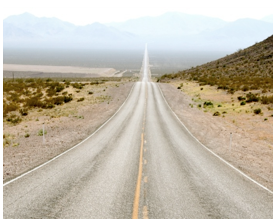NY Times Writer Recycles Old Ideas about Waste and Landfills
 RECYCLING DEBATE-You have to hand it to libertarian writer John Tierney. He doesn’t give up easily. His long-winded 1996 article, “Recycling Is Garbage,” allegedly smashed the New York Times Magazine’s hate-mail record. It covered the same ground as his recent New York Times op-ed, “The Reign of Recycling,” stating: “Recycling may be the most wasteful activity in modern America: a waste of time and money, a waste of human and natural resources.”
RECYCLING DEBATE-You have to hand it to libertarian writer John Tierney. He doesn’t give up easily. His long-winded 1996 article, “Recycling Is Garbage,” allegedly smashed the New York Times Magazine’s hate-mail record. It covered the same ground as his recent New York Times op-ed, “The Reign of Recycling,” stating: “Recycling may be the most wasteful activity in modern America: a waste of time and money, a waste of human and natural resources.”
Is recycling really “the most wasteful activity in modern America?” That’s quite a charge. (What about all that Kardashian coverage?) But it may be true that it would be cheaper to put all our waste in a hole someplace and forget about it. Assuming, as Tierney does, that there are enough conveniently located holes. It would be even cheaper to use the medieval method of tossing it in the street.
But that’s not the way most people think these days. The consensus is that there are limits, both on the amount of land you can dump in, and the amount of materials you can waste.
In any case, no one seems to have listened to Tierney.
Recycling has come a long way. Particularly in the city of Los Angeles. In his recent op-ed, Tierney pessimistically states that recycling “is stuck [at] around 34 percent’’ of America’s trash without sourcing his figure. He quotes a former Environmental Protection Agency official who says going beyond that is impractical.
You wonder when the official said that.
According the State of California, the City of LA has achieved a landfill diversion rate of 76.4 percent – the highest of any of the nation’s 10 largest cities, and higher than the statewide 75 percent urban goal set for 2020. And it’s not just Los Angeles City. California’s sanitation officials portray recycling as a state success story, with most of its communities recycling 50 percent of the waste that used to go into landfills — with many recycling as much as 65 percent. According to County Sanitation Districts’ official Nick Morell, an onslaught of new technologies has made it easier to recycle food and other difficult wastes.
“We’re really mining the waste stream,” he told Capital & Main. To encourage recycling, the state is raising landfill dumping fees from around a dollar to $4 a ton. (Tierney also seems to favor an even higher “landfill tax.”) “We like the carrot and stick approach,” Morell added. Now that more manufacturers are actually making their products easier to recycle (even a new BMW is designed to be recycled after a few hundred thousand miles) and recycling techniques advance, fewer materials end up in landfills. According to Morell, this has helped L.A. County avoid a landfill shortage.
Tierney seems to allow that only recycling paper and metal can be cost-effective, but he notes that demand for such materials is highly variable. He also accuses “politicians” of pushing the recycling of yucky materials like food wastes, which he claims are cheaper to landfill than to compost.
But composting isn’t the last word here. After April 1, many if not most California businesses, including state agencies, will have to recycle their organic waste. Morell says in addition to composting, the county is introducing reactors that will ferment such waste to yield methane that can fuel electric generators, just as it does at some conventional landfills. Morell also cites wet food waste as a useful water source. Tierney, who writes a New York Times science column, seems ignorant of the fast-moving technology of recycling. Further, while alleging that recycling raw materials costs jobs, he ignores the tens of thousands of new jobs emerging in the recycling industry.
Meanwhile, as Morell notes, recycling is now so well-established that even landfill operators do it themselves to make some extra money and save precious landfill space. That Tierney doesn’t believe such land is precious is something we shall deal with momentarily.
There is obviously room for improvement and there’s no doubt that, in particular, recyclable exports have suffered as importing nations have demanded higher quality products and scrap metal prices have sagged. Yet there’s lots of evidence that recycling just keeps moving ahead, even if it has lately hit a speed bump, with California officials stating that goals of 90 percent recycling are now in reach.
Tierney could not agree less. He maintains that “to public officials, recycling is a question of morality, not cost-benefit analysis.”
While to its enthusiasts, he claims, it’s a middle-class religion. He notes that, due to falling oil prices, recycling household waste is much less profitable. No one wants food composting next door, he also claims, citing a case in Delaware. He believes: “[C]ities have been burying garbage for thousands of years and it’s still the easiest and cheapest solution for trash.” He seems personally affronted that, as a 2013 survey found, “82 percent of Americans feel a sense of pride when they recycle.”
Environmentalists argue that there’s a good reason for this.
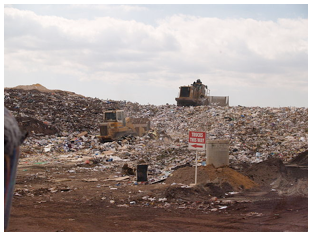 In their online rebuttal to Tierney, enviros Richard Fuller and Magdalene Sims note that if you bury all the trash, you are burying paper and metals – materials that Tierney agrees produce “more than 90 percent’’ of all the greenhouse benefits of recycling. They claim that most experts agree that $40 a barrel oil prices are certain to soar. And they add: “Today, there are many more people on the earth generating an exponentially greater amount of garbage, including a lot more toxic trash than ever before. Simply putting all that into the ground is not a forward-looking solution.”
In their online rebuttal to Tierney, enviros Richard Fuller and Magdalene Sims note that if you bury all the trash, you are burying paper and metals – materials that Tierney agrees produce “more than 90 percent’’ of all the greenhouse benefits of recycling. They claim that most experts agree that $40 a barrel oil prices are certain to soar. And they add: “Today, there are many more people on the earth generating an exponentially greater amount of garbage, including a lot more toxic trash than ever before. Simply putting all that into the ground is not a forward-looking solution.”
Tierney’s big stumbling block is his blind insistence that landfills are better than recycling. He provides no data for this, adding an unsubstantiated assertion that “[T]hey have been welcomed in rural communities that reap large economic benefits.” He also makes a rather weird generalization about landfill availability. In his 1996 article, he “found that all the trash generated by Americans for the next 1,000 years would fit on one-tenth of one percent of the land available for grazing.’’ According to Department of Agriculture figures, that boils down to about 58,000 acres. Ted Turner has ranches far larger than that.
But this is grazing land that tends to be located hundreds, or even thousands of miles from the large waste-producing cities. So even if the city fathers of Yankton, S.D. agreed to accept urban waste from Seattle 1,500 miles away, it would not pencil out. Assuming Yankton wanted it. I would not assume that. Even counties abutting LA County are restricting LA dumping.
They are not alone. Maybe it’s my luck, but in nearly 40 years of municipal reporting in small and large communities in New York, New Jersey, Pennsylvania and California, I never heard of any place that “welcomed” landfills. In every community that had one, the key conversation was how to get rid of it or prevent its expansion. These landfill communities’ leaders had been told, as Tierney states, that there was enough greenery around to “buffer residents from the sights and smells.”
The reality was usually a countryside permeated by the reek of unsorted raw garbage arriving in an unending stream of dripping, two-lane-blacktop-busting, diesel-belching, five-ton trucks. What’s more, in the 19 years since Tierney first made his case, much of the “rural” landscape located a drivable distance from refuse-exuding cities like New York and Los Angeles has become densely developed.
So now you have to sell landfills to the affluent, property-value-obsessed burghers of places like Diamond Bar or Morristown, N.J. Or even the not-so-affluent people of Kern County, who have already filed suits against Los Angeles’ waste dumping. LA County’s landfill alternative is a tract purchased back in 2000 that is 200 miles away and which would cost twice as much to use as the facilities it would replace.
Jackie Cornejo, who guides the Los Angeles Alliance for a New Economy’s Don’t Waste LA project, which has resulted in laws repurposing the city’s waste flow, explains the landfill health problems untouched by Tierney. (Disclosure: LAANE is a sponsor of Capital & Main.)
“Pollution from landfills and diesel-powered collection vehicles harms public health, increasing hospitalization and leading to missed school and work,” she said. “[It] increases rates of cancer, heart and respiratory diseases, and contributes to premature death.’’
There’s an even more important issue. Landfill gases from organic wastes include methane, much of which escapes to boost global warming far more than do equivalent amounts of carbon dioxide. As Mariel Vilella, Zero Waste Europe’s associate director, recently stated:
“For far too long the climate impact of waste management has been overlooked. Now it’s clear that waste prevention, reuse and recycling are climate change solutions that need to be fully integrated into a low carbon economy.”
Tierney’s thesis reflects the classic right-wing credo that natural resources, whether they are the materials in plastic bottles or the land in which to dump them, are infinite. But as our current pope put it, “[T]he lie that there is an infinite supply of the earth’s goods…leads to the planet being squeezed dry beyond every limit.”
If that’s religious thinking, so be it.
(Marc Haefele is a commentator on KPCC’s Off Ramp program and has written for the New York Times and Los Angeles Times. This first appeared at CapitalandMain.com.) Photos: Britta Gustafson (top) and Ashley Felton (lower.) Prepped for CityWatch by Linda Abrams.
-cw
CityWatch
Vol 13 Issue 101
Pub: Dec 15, 2015

 DRUG POLITICS--Some folks are just so awful and scurrilous that jail is almost too good for them. As with the bankers and investment companies that destroyed and burned up the life savings of many Americans since the turn of the century (a form of murder, from a financial point of view), pharmaceutical companies have allowed life-saving medicines (many that have been out for decades and are very inexpensive to make) to skyrocket in price ...
DRUG POLITICS--Some folks are just so awful and scurrilous that jail is almost too good for them. As with the bankers and investment companies that destroyed and burned up the life savings of many Americans since the turn of the century (a form of murder, from a financial point of view), pharmaceutical companies have allowed life-saving medicines (many that have been out for decades and are very inexpensive to make) to skyrocket in price ... GELFAND’S WORLD--This being the antepenultimate column of 2015 for me, it seems appropriate to tell the story of a friend of mine who had to deal with corporate America. But this wasn't the usual corporate screw job by a credit card company or by a cell phone company. This was a combination screw job by both a credit card company and a cell phone company together, in one and the same incident.
GELFAND’S WORLD--This being the antepenultimate column of 2015 for me, it seems appropriate to tell the story of a friend of mine who had to deal with corporate America. But this wasn't the usual corporate screw job by a credit card company or by a cell phone company. This was a combination screw job by both a credit card company and a cell phone company together, in one and the same incident.  MY TURN--When Councilman Felipe Fuentes (District 7) evicted tenants in the North Valley City Hall, he included a police substation as well as the Sunland Tujunga Neighborhood Council in his purge. Even though a hue and cry was raised by his constituents and this writer; we were told that he had every right to do that. Apparently, who occupies city property is under the purview of the Councilmember in that district.
MY TURN--When Councilman Felipe Fuentes (District 7) evicted tenants in the North Valley City Hall, he included a police substation as well as the Sunland Tujunga Neighborhood Council in his purge. Even though a hue and cry was raised by his constituents and this writer; we were told that he had every right to do that. Apparently, who occupies city property is under the purview of the Councilmember in that district. 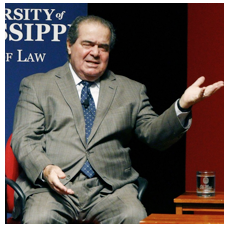 AFFIRMATIVE ACTION REBOOT-Supreme Court Justice Antonin Scalia’s (photo) seeming suggestion this week that students of color would be better off at “a slower-track school where they do well” is not only offensive, it’s wrong.
AFFIRMATIVE ACTION REBOOT-Supreme Court Justice Antonin Scalia’s (photo) seeming suggestion this week that students of color would be better off at “a slower-track school where they do well” is not only offensive, it’s wrong.  CALIFORNIA WATCH--As Governor Jerry Brown touted California’s environmental initiatives and prodded world leaders in Paris to embrace tougher environmental policies during the United Nations summit on climate change, it was instructive to look back at how one of Brown’s top environmental priorities suffered a major defeat in the California Legislature this year.
CALIFORNIA WATCH--As Governor Jerry Brown touted California’s environmental initiatives and prodded world leaders in Paris to embrace tougher environmental policies during the United Nations summit on climate change, it was instructive to look back at how one of Brown’s top environmental priorities suffered a major defeat in the California Legislature this year.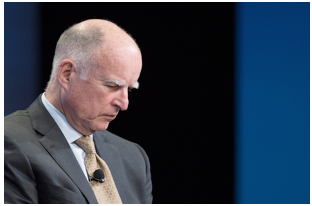 In speaking against the petroleum reduction measure, the bill’s opponents warned that it could result in gas rationing and prohibitions on sport utility vehicles. Opponents, including some Democratic lawmakers, also claimed that cutting petroleum use would be disproportionally harmful to residents of the Central Valley, whose long commutes and dearth of public transportation make dependence on automobiles – and fuel – a certainty.
In speaking against the petroleum reduction measure, the bill’s opponents warned that it could result in gas rationing and prohibitions on sport utility vehicles. Opponents, including some Democratic lawmakers, also claimed that cutting petroleum use would be disproportionally harmful to residents of the Central Valley, whose long commutes and dearth of public transportation make dependence on automobiles – and fuel – a certainty. NO SUBSTITUTE FOR WALKABLE STREETS--At the center of UCLA’s campus, there’s a banner advertising some of the university’s newest groundbreaking research. It features the outline of a small vehicle and reads, “The 405 is a joyride … in a driverless car.”
NO SUBSTITUTE FOR WALKABLE STREETS--At the center of UCLA’s campus, there’s a banner advertising some of the university’s newest groundbreaking research. It features the outline of a small vehicle and reads, “The 405 is a joyride … in a driverless car.”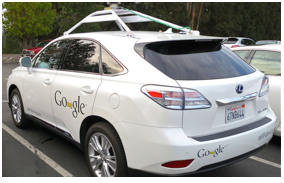 All this portends a brighter future for LA and similar cities. But even today, the truth is that my car-free lifestyle is very doable — sometimes even convenient. LA has a robust bus system that I use to commute to UCLA, and so far I’ve found it to be reliable (LA’s bus and train networks combine for about 1.5 million weekday boardings, third in the nation after New York and Chicago). My home in the Palms neighborhood is a 15-minute walk from a light rail stop that takes me to Downtown LA, which has recently come into its own as a cultural and culinary hotspot. Almost everything I need is within biking distance of my apartment, and when I have to, I can rely on the generosity of friends with cars.
All this portends a brighter future for LA and similar cities. But even today, the truth is that my car-free lifestyle is very doable — sometimes even convenient. LA has a robust bus system that I use to commute to UCLA, and so far I’ve found it to be reliable (LA’s bus and train networks combine for about 1.5 million weekday boardings, third in the nation after New York and Chicago). My home in the Palms neighborhood is a 15-minute walk from a light rail stop that takes me to Downtown LA, which has recently come into its own as a cultural and culinary hotspot. Almost everything I need is within biking distance of my apartment, and when I have to, I can rely on the generosity of friends with cars.
 And that's what leads to the next point. If it's not the local police, who does make the decision to keep all these jails closed? It's not going to be a deep revelation that this kind of decision comes out of the city's budget process. Could the city find the dollars to open the Harbor Area Jail if it were considered a weighty enough priority? Obviously it could. But that decision would come at the cost of other priorities.
And that's what leads to the next point. If it's not the local police, who does make the decision to keep all these jails closed? It's not going to be a deep revelation that this kind of decision comes out of the city's budget process. Could the city find the dollars to open the Harbor Area Jail if it were considered a weighty enough priority? Obviously it could. But that decision would come at the cost of other priorities. 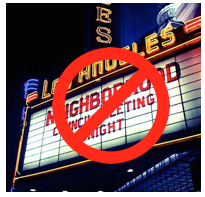 DOWNTOWN- This week, the Downtown Los Angeles Neighborhood Council (DLANC) had to cancel it’s monthly Board meeting after being informed of their Brown Act violations. This comes after last week’s abrupt cancellation of the DLANC Executive Committee meeting.
DOWNTOWN- This week, the Downtown Los Angeles Neighborhood Council (DLANC) had to cancel it’s monthly Board meeting after being informed of their Brown Act violations. This comes after last week’s abrupt cancellation of the DLANC Executive Committee meeting. 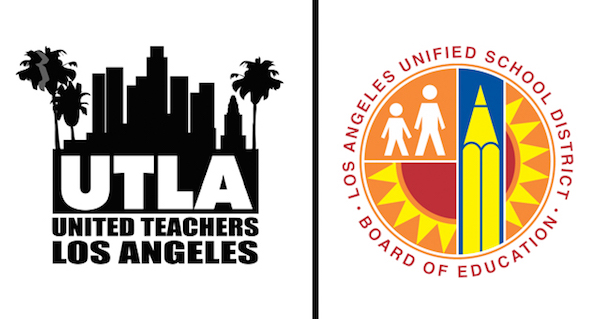

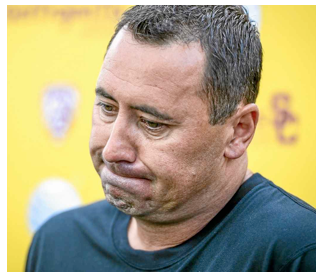 SPORTS POLITICS--On Monday, former University of Southern California head football coach Steve Sarkisian
SPORTS POLITICS--On Monday, former University of Southern California head football coach Steve Sarkisian 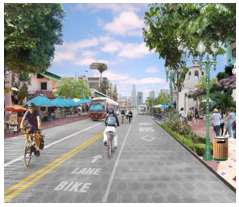 BIKING … THE VIEW FROM HERE--Good news for anyone who believes in the future of cities and humanity; bad news for the Neanderthals on the LA City Council who grunt nostalgically for the bad old days of traffic jams, road rage, sprawl, and blood on the streets. (And anyone who believes that road rage is a new phenomenon need only watch the 1950s Disney cartoon,
BIKING … THE VIEW FROM HERE--Good news for anyone who believes in the future of cities and humanity; bad news for the Neanderthals on the LA City Council who grunt nostalgically for the bad old days of traffic jams, road rage, sprawl, and blood on the streets. (And anyone who believes that road rage is a new phenomenon need only watch the 1950s Disney cartoon, 
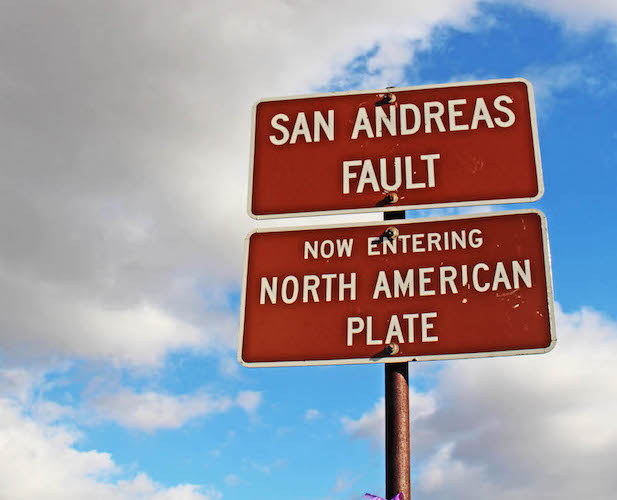
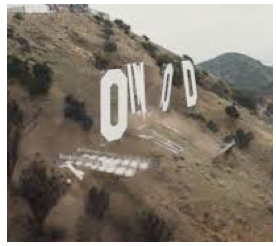 But there are only so many police and firemen, not to mention trucks and ambulances. For the most of us, it will be the scenario I've characterized as You're On Your Own, aka YOYO, at least for a crucial 3 or 4 days. You won't have a lot of help from the uniformed agencies, because they will be tied up dealing with areas of dense population and mass casualties.
But there are only so many police and firemen, not to mention trucks and ambulances. For the most of us, it will be the scenario I've characterized as You're On Your Own, aka YOYO, at least for a crucial 3 or 4 days. You won't have a lot of help from the uniformed agencies, because they will be tied up dealing with areas of dense population and mass casualties. 
 One of the most moving scenes in the diary occurred when the students made a kind of feminist pilgrimage to pay respect to the novelist and social reformer Hannah More (photo), the high-minded rival of Jane Austen. As the author of numerous books—some of them huge bestsellers—she appeared to them the epitome of the England that Salih called the vilayat-i azadi, or “land of freedom.” The students praised her learning and library; she gave them signed copies of her books, which they promised to print when they returned home.
One of the most moving scenes in the diary occurred when the students made a kind of feminist pilgrimage to pay respect to the novelist and social reformer Hannah More (photo), the high-minded rival of Jane Austen. As the author of numerous books—some of them huge bestsellers—she appeared to them the epitome of the England that Salih called the vilayat-i azadi, or “land of freedom.” The students praised her learning and library; she gave them signed copies of her books, which they promised to print when they returned home.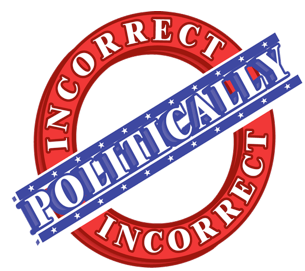
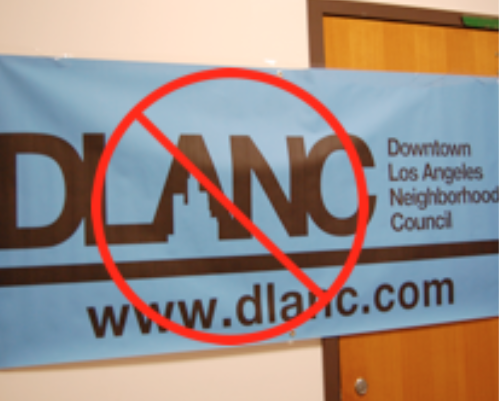
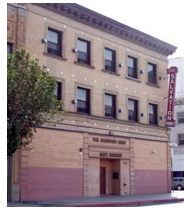 The timing for this sudden departure is even more interesting because there is a proposed development in Skid Row to convert buildings that were previously used by Salvation Army (photo) to provide housing and services to homeless and formerly homeless. The developer now wants to change it into an adaptive reuse project which plans to provide market-rate, micro-unit housing to students and workforce members -- in the heart of Skid Row!
The timing for this sudden departure is even more interesting because there is a proposed development in Skid Row to convert buildings that were previously used by Salvation Army (photo) to provide housing and services to homeless and formerly homeless. The developer now wants to change it into an adaptive reuse project which plans to provide market-rate, micro-unit housing to students and workforce members -- in the heart of Skid Row! 
 Serious gun control is needed now. Mere possession or sale of assault or any semi-automatic weapons should be declared grounds for possible criminal prosecution. A period of amnesty should be granted for all to turn in these weapons – even reimbursing the owners who can provide proof of purchase; otherwise, allow them to surrender the weapons anonymously.
Serious gun control is needed now. Mere possession or sale of assault or any semi-automatic weapons should be declared grounds for possible criminal prosecution. A period of amnesty should be granted for all to turn in these weapons – even reimbursing the owners who can provide proof of purchase; otherwise, allow them to surrender the weapons anonymously.  In the wake of the horrific attacks in Paris on Nov. 13, there has been a crushing backlash against refugees from the wars in Syria, Iraq and Afghanistan. A cartoon has been circulating on social media showing a Native American man greeting a Pilgrim, saying, “Sorry, but we’re not accepting refugees.”
In the wake of the horrific attacks in Paris on Nov. 13, there has been a crushing backlash against refugees from the wars in Syria, Iraq and Afghanistan. A cartoon has been circulating on social media showing a Native American man greeting a Pilgrim, saying, “Sorry, but we’re not accepting refugees.” 